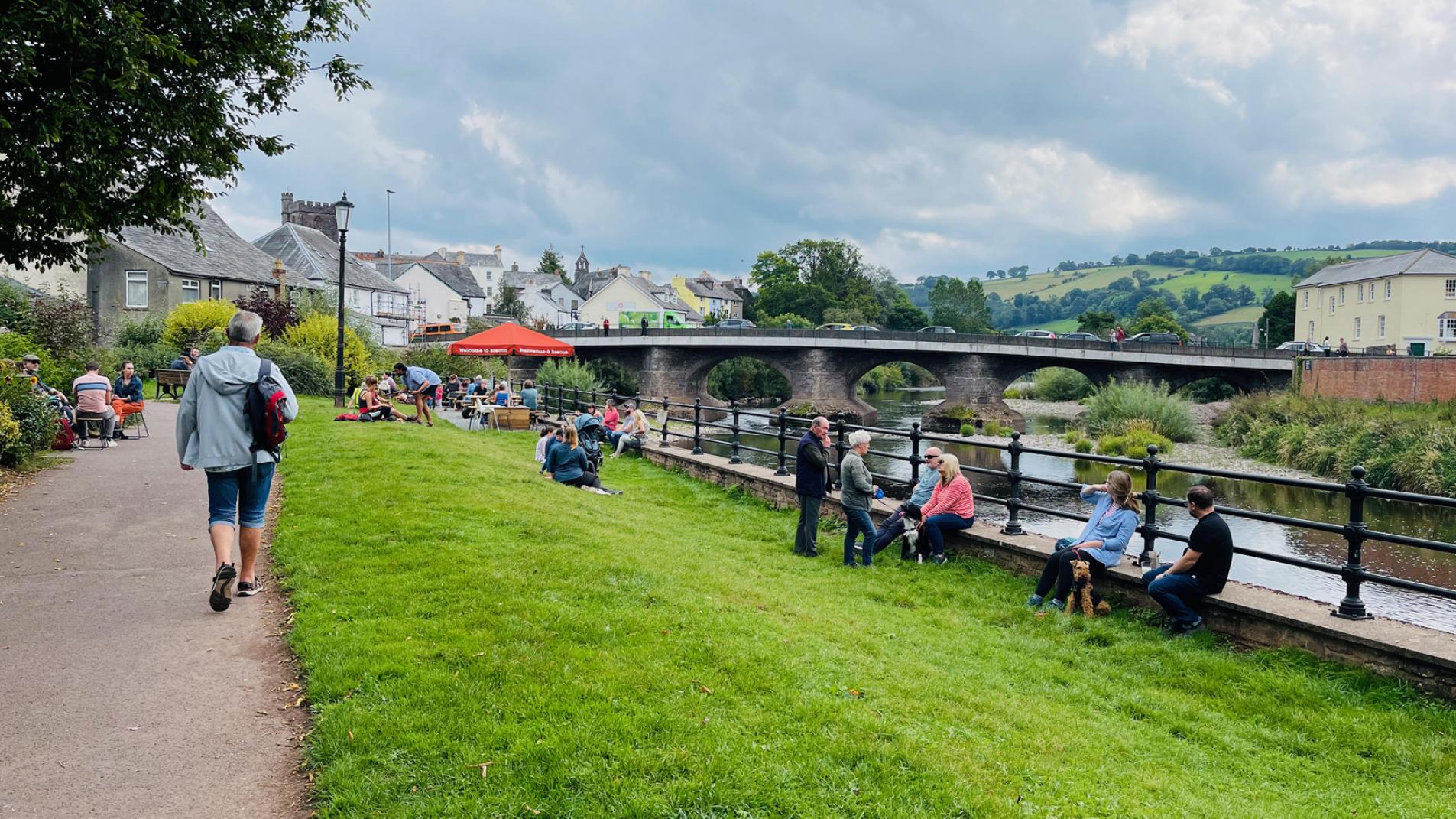
Visit The Promenade & Usk Bridge. This is the 8th stop in WALK: The Brecon Story, our heritage trail around Brecon.
Kensington
We walk out of Castle Square, across The Avenue and down the narrow lane, Mount Pleasant Gardens, past the pretty cottages of Kensington Row then right along Kensington itself to stand at the bottom of Mill Street. In a few hundred metres, we have travelled from the height of Victorian luxury to the location of some of its worst misery. In 1854, Brecon was hit with its worst outbreak of cholera, claiming the lives of 57 people over just three months. A local doctor, Thomas Prestwood Lucas traced some of the cases back to Mill Street with many others further along what we now call Maendu Street and Bailey Glas. The cause, sewage pollution running down the Maddrell Brook close to a well used by local families. The solution that he pushed - better sewers and efficient drainage including the culverting of the Maddrell. Stand on the drain covers in Mill Street after rainy weather and you can still hear water flowing. Its end point, a storm drain into the river at the end of Rhydbernard Terrace.
We continue walking west - past the bowling green across which the Usk Mill race once flowed. Rhydbernard Terrace itself starting life as Mill Green cottages, the Mill standing near the start of the Promenade - where we can still see water being drawn off the weir for piping alongside the river before cutting inland below the Captain’s Walk and down to the canal.
Promenade and Usk Bridge
The Promenade was opened on 21 May 1894 and lauded as ‘one of the greatest improvements that have been made in Brecon for a very long time.’ But there was a sting in the tail. ‘The worth and beauty of the improvement is more fully seen if we contrast the old state of Mill Green…and their stagnant pools and rubbish with the present lovely walk’ reported the Brecon County Times just a week later. And there was more. ‘Where are our policemen? The other evening…a number of the small unwashed from Mill Street were sliding down the sides of the steps, barking and pulling branches off the trees, running down the newly laid embankment, and otherwise destroying the work. Their mothers were industriously picking rags from the heaps of rubbish and shaking and sorting them on the grass and their fathers were doing a lounge stretched full length on the seats - evidently considering that they had been placed there for their special advantage.’
Following the Promenade back downstream, and walking past the historic Castle Mill - we come to the Usk Bridge, a seven span stone structure built in 1563 and much altered since then. Local histories are thick with stories about the cost of maintaining this and other bridges along with the impact of repeated floods. But there are more human stories as well. In 1775, cock fighting between ‘the gentlemen of Brecon and the gentlemen of Carmarthen’ was advertised in the Greyhound Inn just over the river in Llanfaes. In 1835 a wheel fell off the Red Rover Coach throwing its passengers to the ground - but mercifully not into the river. In 1837, Mr Prosser of the Bridge End Hotel - the building to the left at the Llanfaes side of the bridge rescued five people from drowning on different occasions. By 1871, the Brecknock New Angling Association was using the bridge to mark the border between the ‘Upper’ and ‘Lower’ Fisheries, selling ‘Forty Shilling Season Tickets’ to local hotel guests - the aim being to ‘protect trout fishing in…one of the best trout rivers in the kingdom.’ If only that had worked out! In 1907 a ‘telephone cable jointer’ from Llandrindod Wells drowned while swimming nearby. In 1920 there were demands for a police man to direct motorists who ‘hug the wrong corner’ while crossing the bridge.
Christ College Brecon
Across the Usk Bridge lies Christ College. A Dominican Friary dedicated to St Nicholas was established here c1250 while a collegiate church founded in Abergwili, Carmarthen by Bishop Beck in 1283, was moved to this site under a charter of Henry VIII in 1541. Revenues of the Dominican Friary were handed over the the College after the dissolution of the monasteries to help pay for its running.
By the 19th century the college was in a sorry state and had few pupils. So it was re-established under a new act of parliament in 1855, with architects restoring some of the older buildings including the 13th century chapel and the two halls with their fine 15th century open timber roofs. It now has some 350 pupils, some of them locals, others travelling from around the world.
The Promenade is part of our WALK: The Brecon Story heritage trail. Click here to access the Google Earth map or visit the next place on our trail